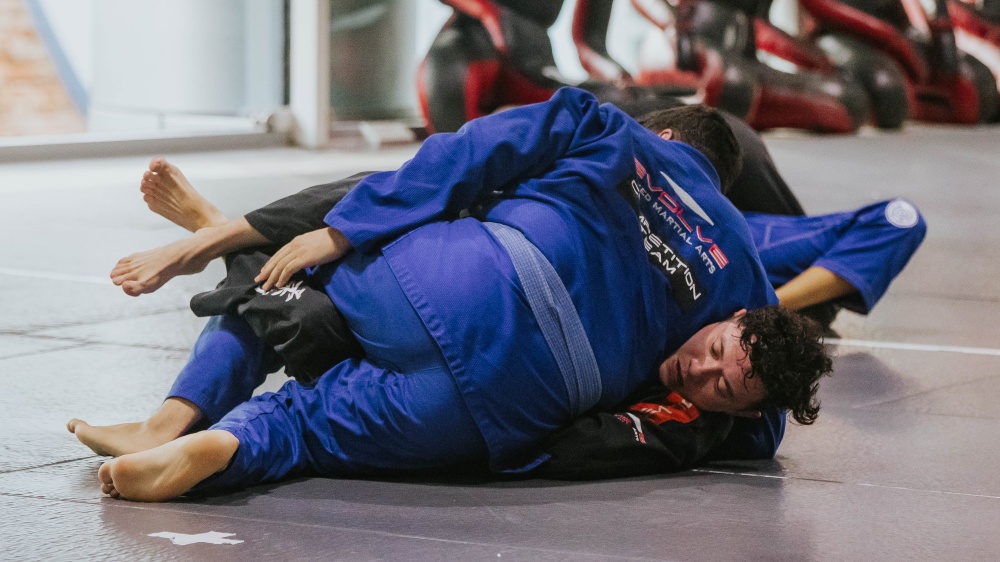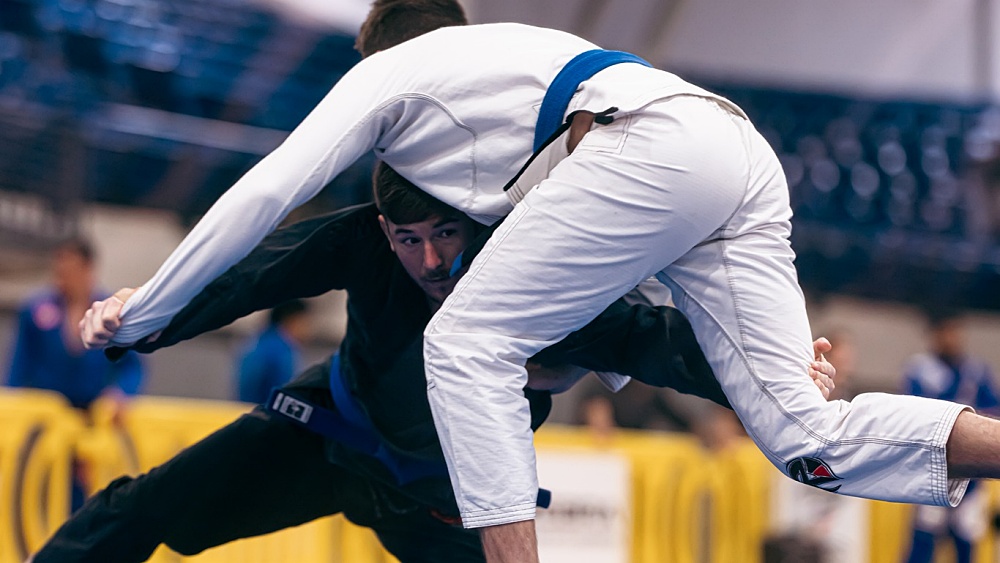The evolution of Brazilian Jiu-Jitsu has been nothing but impressive. For the past couple of years, the sport has come a long way in terms of technical development, with many top-level athletes leveraging BJJ-specific techniques and taking notes from other grappling styles like wrestling and Judo. The ability to transition from the ground to a standing position, or vice versa, is an essential skill often overlooked. This transition, commonly referred to as a “wrestle up” in the BJJ vocabulary, bridges the gap between traditional wrestling and Jiu-Jitsu. Mastering wrestle-ups can significantly enhance your overall BJJ game, offering both defensive and offensive advantages. In this article, we’ll review the basics of wrestle-ups in the context of BJJ.
The Concept Of Wrestle Ups
A wrestle-up in BJJ refers to the act of transitioning from a ground position, typically when playing guard, to a standing position, ready to wrestle the opponent to the mat. The primary goal of wrestling up is to escape a potentially disadvantageous position on the ground and reset (or initiate) the engagement on the feet. This movement borrows heavily from wrestling in many ways, where standing up from the bottom to escape control is a fundamental skill that all great wrestlers possess.
Why Wrestle Ups Matter In BJJ
In BJJ competitions, points are awarded for achieving positional dominance and advancement. If you’re stuck on the bottom, especially under a dominant pin like mount or side control, you risk conceding points, and at the same time, you are highly vulnerable to submissions. A successful wrestle-up prevents the opponent from scoring and offers the chance to engage in takedowns, potentially earning points yourself.
Moreover, being pinned to the ground can be particularly dangerous in mixed martial arts (MMA) or self-defense situations. Wrestle-ups provide a route to get back to your feet, where you have a better chance of defending yourself or taking the offensive.
Key Techniques For Effective Wrestle-Ups
The art of wrestling up is a broad topic, all things considered. At its core, wrestling up is basically coming up from a lower-level position like the guard and attacking the opponent with wrestling-based moves. For beginners to the concept of wrestle-ups, we listed some of the most important movements for you to learn.
1) Technical Stand-Up
The technical stand-up is a foundational BJJ movement. Starting from a seated position, place one hand on the ground while retracting the opposite leg, propelling yourself upwards and into a standing position. The technical stand-up is both a defensive technique, allowing you to stand up safely without exposing yourself to attacks, and an offensive tool, setting you up for potential takedowns. Many of the most common wrestle-ups from standard guards like X, Single Leg X, and De La Riva use some variation of the technical stand-up.
2) Sit-Out Turn-In
This movement is basically taken from traditional wrestling. When an opponent controls you from the top in a turtle position, the sit-out turn-in involves rotating your hips and threading one leg underneath you to create space. Once the space is established, you can explode upwards, breaking the opponent’s control and returning to your feet.
3) Hip Heist
Another basic wrestling technique, the hip heist, involves a quick rotation of the hips to switch your position. If you’re on the bottom, a well-executed hip heist can help you stand up and transition to a top position, reversing the roles and putting you in control. Many of the best entries to the front headlock and back start from the hip heist movement.
Wrestle Ups In Action
In this video, Jiu-Jitsu superstar Andrew Wiltse shows a wrestle-up series from the guard position. He mentions that this is a big part of his current game, and he likes to use wrestle-ups to threaten sweeps and submissions. From the seated guard, he prefers to attack using the shin-on-shin guard, then transition to either the Single Leg X or X guard and then wrestle up. Notice that he repeatedly mentions the value of off-balancing the opponent (kuzushi) using redirection and manipulation of the opponent’s leg. He then utilizes the key techniques we previously discussed, particularly the technical stand-up. Remember that the primary purpose of wrestling up is to move from the bottom position to a more dominant one, so expect a lot of resistance from your opponent as you move from one position to the next.
Integrating Wrestle Ups Into Your Training

To truly benefit from wrestle-ups, it’s vital to integrate them into your regular BJJ training. Here are some tips to get you started.
- Sparring With Intent: During sparring sessions, deliberately put yourself in positions where you must wrestle up. This not only gives you practical experience but also helps you identify areas of improvement. Identify these positions before the class and do your best to get into these positions as best as possible.
- Drilling Transitions: BJJ is all about movement and transitions. Consistent drills, and transitioning from various ground positions to a standing posture using wrestle-ups are beneficial to your development. This repetition builds muscle memory, making the movements second nature. You need to drill more if you can’t pull off these moves in actual sparring.
- Cross-Training: Consider cross-training in wrestling or attending wrestling-focused classes. This exposure will deepen your understanding of the mechanics behind wrestle-ups and introduce you to new techniques. Typically, wrestling classes are more intense in terms of pace. Adapting this intensity can only help you in your quest to master your wrestle-ups.
- Scenario Training: Engage in scenario-based training where you start from a disadvantaged position and have to wrestle up to score points or achieve a specific objective. This type of training simulates competition scenarios and can be invaluable in preparing for tournaments. This is great if you plan to compete in the upcoming weeks or months.
Conclusion
While Brazilian Jiu-Jitsu is often associated with ground fighting, the ability to transition between the ground and standing positions is invaluable. Wrestle-ups offer a dynamic way to escape from the bottom, reset engagements, and potentially turn the tables on your opponent.
By understanding the importance of wrestle-ups and dedicating time to mastering them, you can add a versatile and potent tool to your Jiu-Jitsu arsenal. Whether you’re a competitor, a hobbyist, or someone interested in self-defense, the skills acquired from perfecting wrestle-ups will undoubtedly serve you well in your martial arts journey.
You may also like:

















